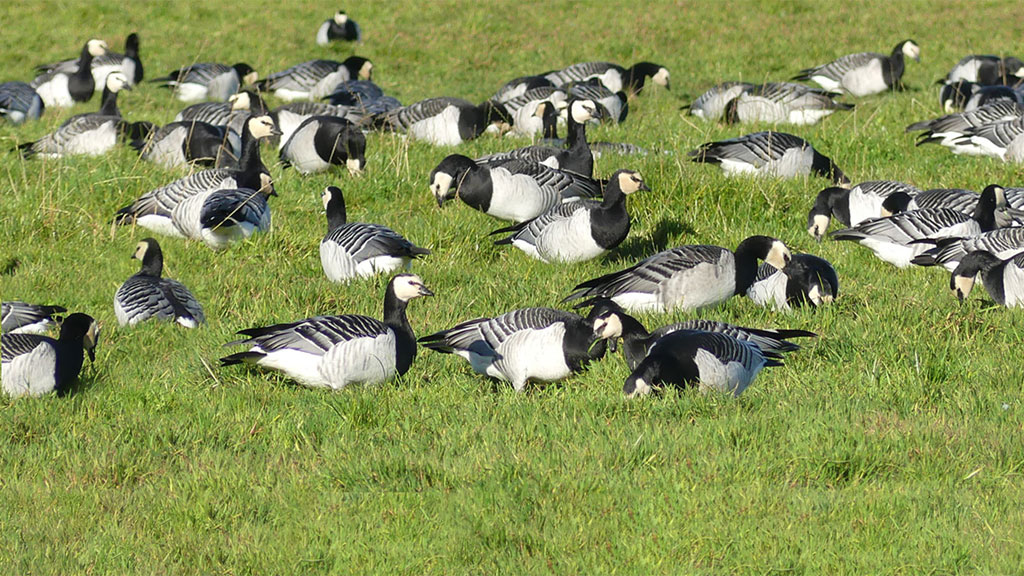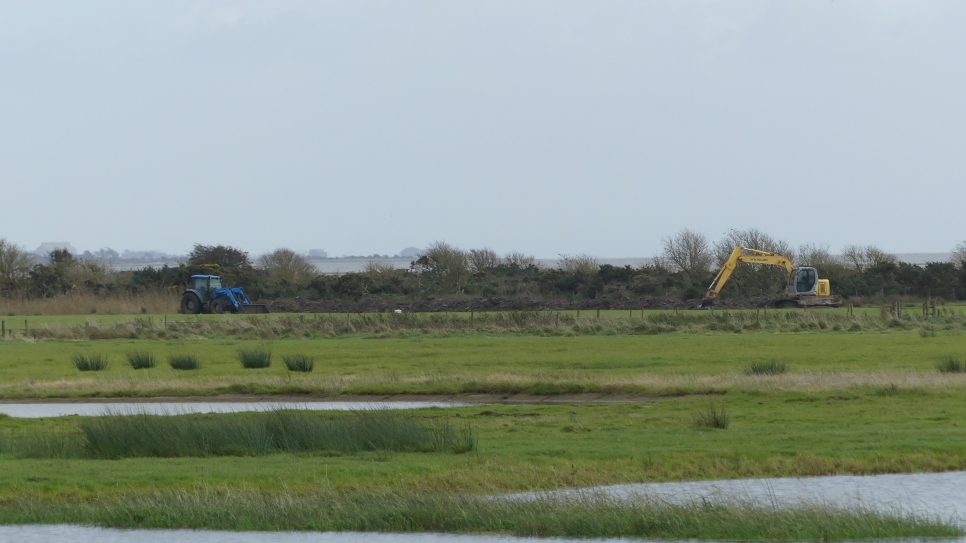It's fungus season
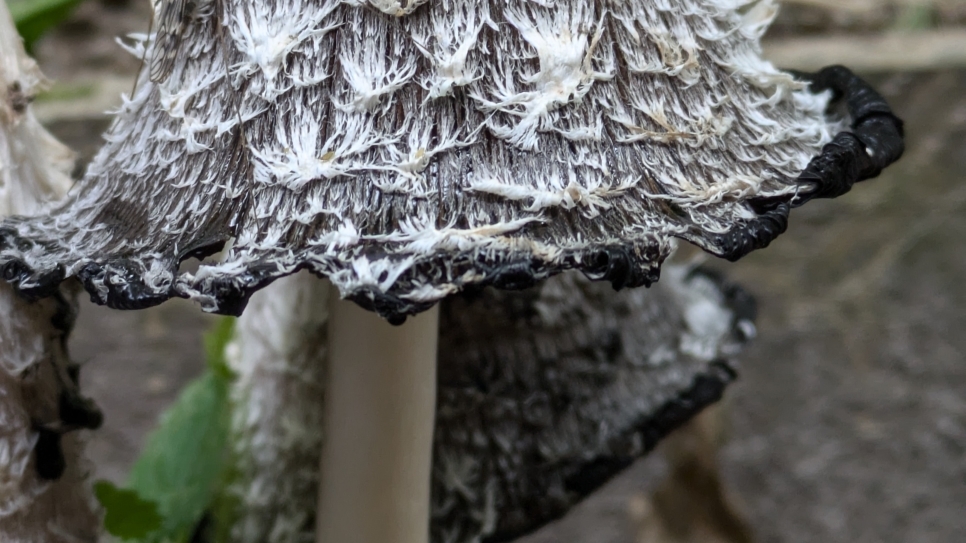
Autumn is prime time to see the weird and wonderful fruiting bodies of fungi. The moisture in the air and cool temperatures create the ideal conditions for their spores to germinate. Although the fruiting bodies can be large and eye catching, the majority of their living matter and life cycle is found underground. In the soil they take the form of a mass branched filaments called ‘hyphae’ that extend and intertwine with one another to collectively form a network called the ‘mycelium’. If you have ever kicked up a pile of leaves and noticed something that looks like cotton wool stuck underneath or retrieved your halloween pumpkin from the front door and found it sporting a new fur coat, that is mycelium! It spreads through the soil or chosen substrate in search of organic matter to break down and feed on.
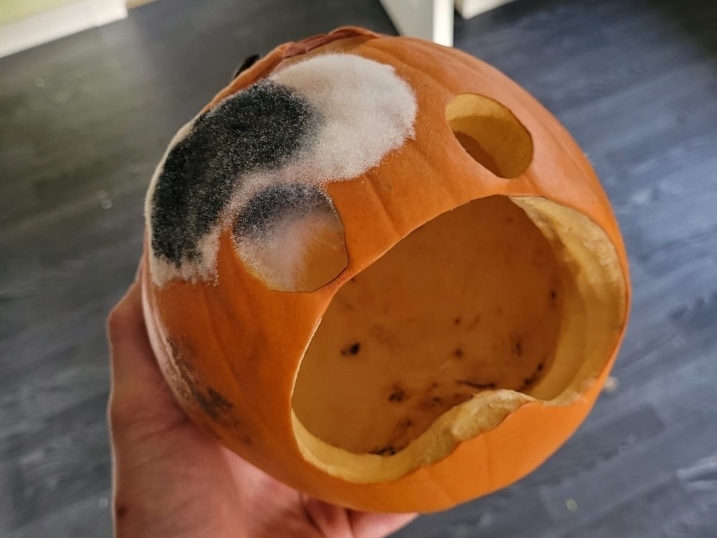
My very worried pumpkin wearing a mycelium toupee
The shaggy ink cap, Corpinus comatus, is always an exciting find on a crisp autumn day. It can grow in rich soils near paths, urban parks and lawns. This cluster was poking out of a path near one of our busy bird hides. As the name suggests, these mushrooms produce an inky black liquid as they liquify themselves in order to release their spores. The two photos below were taken only a day apart and shows how rapid the ‘deliquescing’ (turning to liquid) process is.

Another otherworldly looking fungi you can see on the reserve is jelly ear, Auricularia auricula-judae. These can be found growing in clusters on the decaying branches of elder trees and various other hardwoods like ash, beech and sycamore. You can find this fungi in wet woodland areas all year round but they’re most abundant in late autumn to early winter.
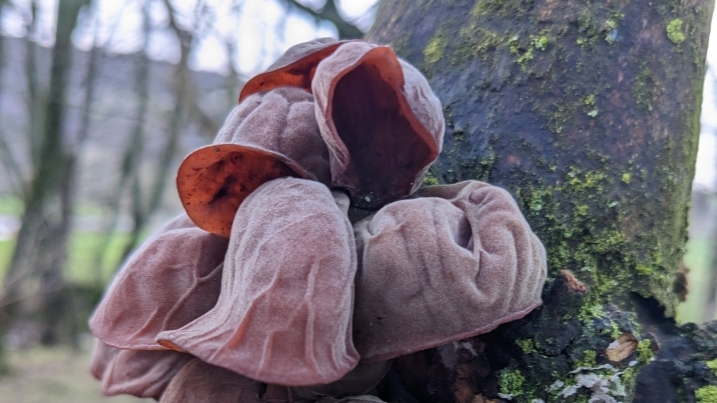
The fruiting bodies of fungi can be delicious to not only humans and invertebrates but other fungi too! This is an example of a parasitic fungus that feeds on bolete mushrooms called, Hypomyces chrysospermus. In the early stages of infection it will cover the mushroom in a white fuzz of hyphae, then in the further stages of decomposition moisture will be drawn out and the whole mushroom will yellow. This was an infected bolete I found on site being consumed by the fungus in early October.
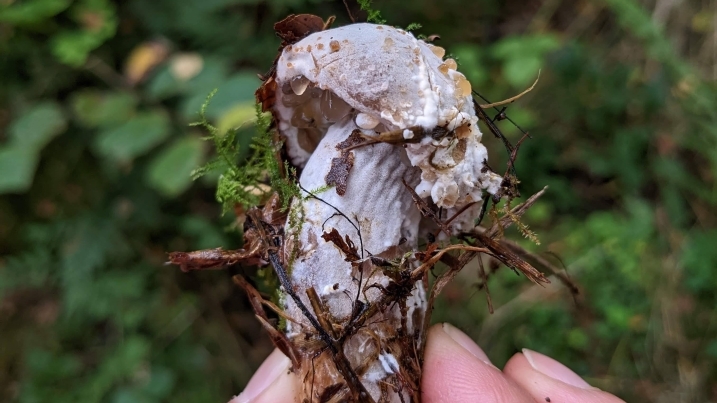
Although slime molds are not part of the fungi kingdom, I couldn’t resist including one of them. I found this small patch of bright orange slime mold growing on a mossy log in one of the wooded areas on the reserve. It’s hard to 100% confirm what this is but my best guess is ‘raspberry slime mould’, Tubifera ferruginosa. During the feeding stage of a slime mould’s life cycle, it becomes one large amoeba (a single cell) called a ‘plasmodium’. It moves across the surface of decaying material, consuming organic matter or bacteria and then once the food source runs out or conditions become too dry, it begins to form fruiting bodies called ‘sporangia’. These structures will produce spores which are dispersed by the wind. The photo below shows the slime mold beginning to form its sporangia.

Words and pictures by Annabelle Gurney
Feature image of shaggy inkcap edge curled up by Annabelle Gurney

